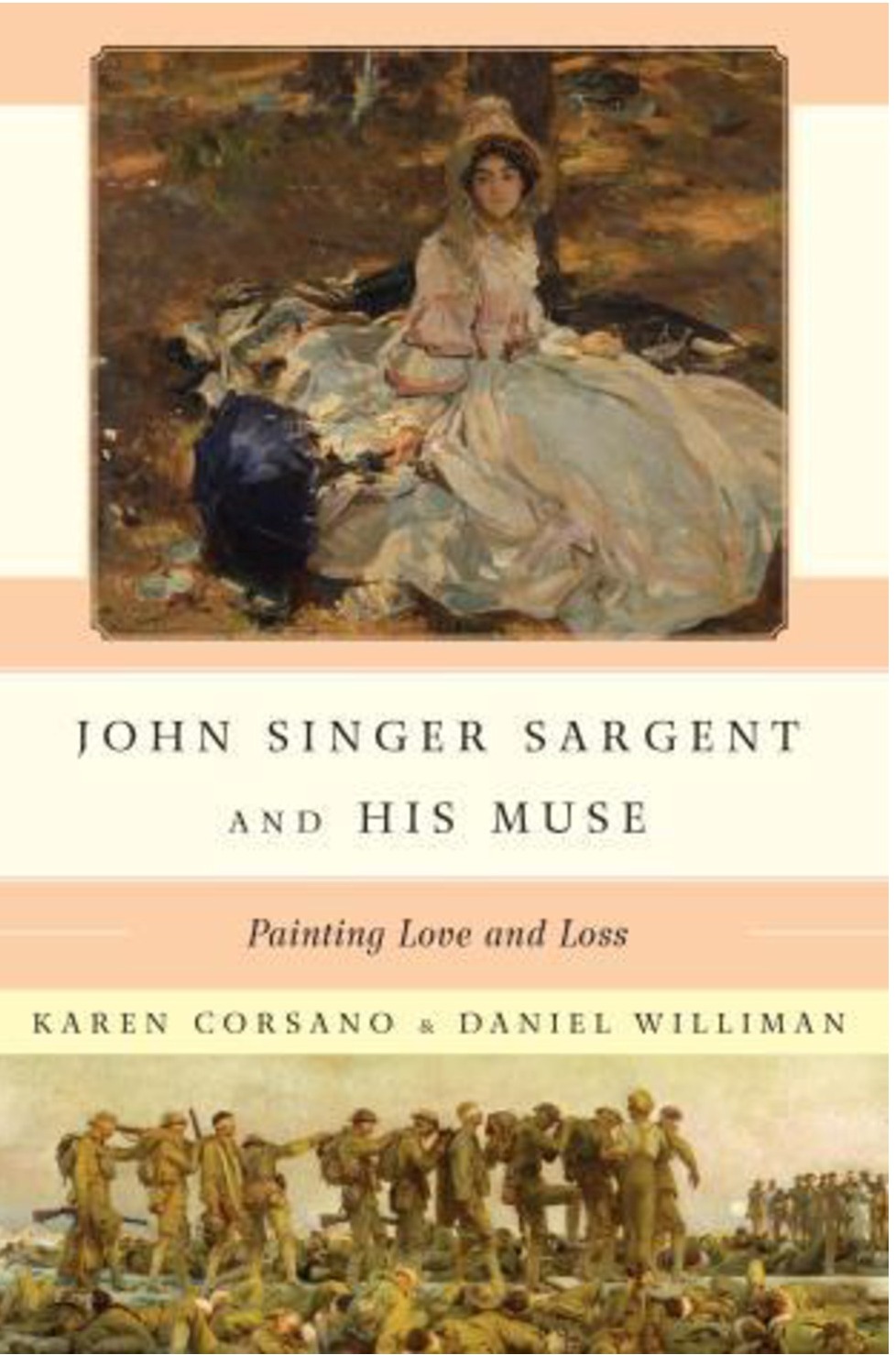Contact us by email at [email protected].
 Karen Corsano and Daniel Williman have written a gem of a book. Their research here reveals important
new biographical discoveries that fill out the historical record on renowned artist John Singer
Sargent and his body of work. In addition, the authors provide an intimately nuanced and textured
account of select moments and events in the city of Paris and elsewhere during the First World War.
This deeply archival and beautifully elaborated story of art and war, of human love and loss, will
be of value and substantial interest to art historians and the general reader alike.
Karen Corsano and Daniel Williman have written a gem of a book. Their research here reveals important
new biographical discoveries that fill out the historical record on renowned artist John Singer
Sargent and his body of work. In addition, the authors provide an intimately nuanced and textured
account of select moments and events in the city of Paris and elsewhere during the First World War.
This deeply archival and beautifully elaborated story of art and war, of human love and loss, will
be of value and substantial interest to art historians and the general reader alike.The authors have brilliantly captured a vibrant, artistic, and intellectual Europe on the brink
of catastrophic change. They have combined the meticulous research and narrative pace of biography
with the lyricism of a love story, which, were it not poignantly real, might seem to be the stuff
of fiction. The adventure of Robert's scholarship and the beauty of Rose-Marie (captured in her
uncle's ravishing studies) are silent testaments to the glory of their short lives, the tragedy
of the Great War that killed them both, and the pity of promise unfulfilled.
Elaine Kilmurray, research director, John Singer Sargent Catalogue Raisonné
An indelible account of lives maximally charged with talent and romance, and horribly undone
by loss. Karen Corsano and Daniel Williman have produced a brilliant book, a tale of intertwined
families that is at once panoramic and intimate. Full of apposite images and quotations from
primary sources, it sets out to tell the story of John Singer Sargent's most famous
commission-the murals for the Boston Public Library-but it ends up telling a story that is so
much bigger, and even more moving.
Sebastian Smee, art critic, The Boston Globe
Corsano and Williman have created a tapestry of cultural and family connections, illuminating
one particularly vibrant corner of the turn-of-the-century world of Sargent and his cosmopolitan
friends-a world that would not survive the onslaught of war. The authors have focused on a
fascinating cast of characters with a moving tale to tell.
Mary McAuliffe, author of Twilight of the Belle Epoque
This scholarly biography casts new light upon the influences and family history of the
famed American portraitist John Singer Sargent (1856–1925). Coauthors Corsano and Williman
focus intently on two major figures in the artist's life: Rose-Marie Ormand, Sargent’s
niece and favored model, and her husband, Robert André-Michel, an art historian and the son
of a prominent French art critic. Wed in 1913, young Robert and Rose-Marie were 'raised in the
cult of the beautiful,' moving in refined circles of artists, scholars, and connoisseurs.
Corsano and Williman use the couple’s correspondence records to eloquently chart the tragedy
that WWI brings to their lives, and to the entirety of the European Belle Epoque. Robert
perishes in the trenches as an infantry sergeant in 1917, and Rose-Marie bravely works as an
army nurse until she too is killed, by German bombs, in 1918. The authors’ final chapters
reconsider Sargent’s postwar work (including the mural masterpiece, Triumph of Religion) as
memorial to his beloved family and to the era of beauty and refinement cut short by the Great
War.
Booklist
This book is what is missing from Charteris' biography of Sargent. The chapters dealing
with and up to Rose Marie's death are beautiful and moving. Such a sad and tragic waste of
lives. A different volume that sees Sargent beyond the glitter we are used to seeing him
in. This volume belongs on the shelf of any serious Sargent collector.
Kiku at Amazon, on September 2, 2014
Cate McQuaid in the Boston Globe, Sep. 22, 2014
John Singer Sargent’s epic mural “The Triumph of Religion” at the Boston Public Library includes a panel titled “Church.” In it, a young woman
symbolizing the Christian church holds a host and chalice. She’s also a pietà; the dead Christ slumps between her knees.
Installed in 1919, this particular painting had deep personal resonance for Sargent. His niece Rose-Marie Ormond had been killed at 24 in a
German bombing of a Paris church the year before. Rose-Marie had nursed blinded soldiers, and the figure in “Church” wears a wimple and
an army great coat, both worn by nurses in World War I-era France.
“John Singer Sargent and His Muse: Painting Love and Loss” by Karen Corsano and Daniel Williman intricately pieces together the stories
of Sargent, his niece, and her husband, scholar-turned-soldier Robert André-Michel.
click here to see the full review.
Back to the top of the page
Back to the Sargent Page
Back To Home Page